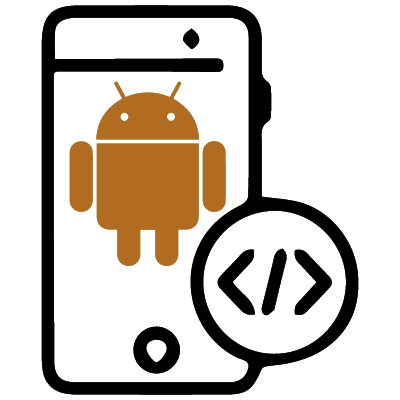Multi-Device App is a critical necessity in today’s technology-driven world. This article, produced by the Research and Development unit of “Flexinexa,” delves into the challenges and opportunities in the development of multi-device app. In our contemporary world, where utilizing various devices for daily activities has become commonplace, developing applications that perform seamlessly across multiple platforms has gained paramount importance. In this article, we introduce the challenges faced by developers and explore the opportunities in this field, presenting innovative solutions for optimizing user experience and enhancing app performance.

What are the main challenges in Multi-device app development?
The development of Multi-device apps presents several significant challenges due to the diversity of devices, operating systems, and user expectations. Here are the main challenges:
Device Diversity and Cross-Platform Compatibility:
Developing an app that functions seamlessly across various devices (smartphones, tablets, desktops) and operating systems (iOS, Android, Windows) is a major challenge. Each platform has its unique specifications, capabilities, and limitations that developers must account for. Ensuring cross-platform compatibility often requires additional time and resources.
App Design:
Designing a user interface (UI) that is intuitive and consistent across multiple devices is complex. Different screen sizes, resolutions, and interaction methods (touch, mouse, keyboard) necessitate adaptable design strategies. Maintaining a uniform user experience (UX) while catering to the unique aspects of each device requires meticulous planning and execution.
App Optimization:
Optimizing the performance of the app on different devices is crucial. This includes ensuring fast load times, smooth animations, and responsive interactions. Varying hardware capabilities, such as processing power and memory, can impact the app’s performance, making optimization a challenging task.
User Experience (UX):
Providing a seamless and satisfying user experience across all devices is a significant challenge. Users expect a consistent experience regardless of the device they use. This involves not only UI consistency but also ensuring that app features and functionalities are coherent and intuitive across different platforms.
Software Development and Integration:
Integrating the app with different device features (camera, GPS, sensors) and third-party services (APIs, cloud services) can be complicated. Each device may handle these integrations differently, and developers must ensure smooth interoperability. Additionally, maintaining the app’s functionality amidst frequent updates and changes in operating systems adds to the complexity.
Security and Data Privacy:
Ensuring the security and privacy of user data across multiple devices is paramount. Different platforms have varying security protocols, and developers must implement robust measures to protect sensitive information. Compliance with legal standards and regulations, such as GDPR, is also a critical aspect of this challenge.
Testing and Quality Assurance:
Comprehensive testing on multiple devices and platforms is necessary to identify and fix bugs. This requires a diverse range of testing tools and environments, as well as a significant investment in time and resources. Ensuring high-quality performance and reliability across all supported devices is a demanding process.
Maintenance and Updates:
Regular updates and maintenance are essential to keep the app functional and secure. However, managing updates across various platforms can be challenging. Developers must ensure that new features and bug fixes are consistently applied to all versions of the app, without disrupting the user experience.

What opportunities for innovation exist in multi-device app development?
The development of Multi-device apps opens numerous opportunities for innovation due to the evolving nature of technology and user expectations. Here are some key opportunities:
Cross-Platform Development:
One of the most significant opportunities lies in the advancement of cross-platform development frameworks. Tools like React Native, Flutter, and Xamarin allow developers to write code once and deploy it across multiple platforms, significantly reducing development time and costs. This fosters innovation by enabling rapid prototyping and experimentation with new features.
Enhanced User Experience (UX):
Innovating in the realm of user experience is crucial. By leveraging adaptive design techniques, developers can create apps that offer a seamless experience across different devices. Innovations in UX can include personalized interfaces, context-aware functionalities, and intuitive navigation systems that adapt to the user’s device and usage patterns.
Advanced App Optimization:
Opportunities for innovation also exist in optimizing app performance. Utilizing machine learning algorithms to predict and pre-load user actions, implementing efficient caching strategies, and optimizing resource usage can lead to faster and more responsive apps. These innovations not only enhance performance but also improve user satisfaction.
Device Integration:
The integration of diverse device capabilities offers numerous innovative possibilities. For example, leveraging sensors, cameras, GPS, and biometric data across various devices can create richer and more interactive user experiences. Multi-device integration can lead to new functionalities such as synchronized multi-screen use, where users can seamlessly switch between devices or use them concurrently for different tasks.
Augmented Reality (AR) and Virtual Reality (VR):
The incorporation of AR and VR technologies into multi-device apps represents a significant area for innovation. These technologies can provide immersive experiences that are enhanced by the ability to switch between devices, such as starting an AR experience on a mobile app and continuing it on a VR headset.
Progressive Web Apps (PWAs):
Progressive Web Apps present an innovative approach by combining the best features of web and mobile apps. PWAs offer offline capabilities, push notifications, and quick load times, making them a versatile option for multi-device usage. This approach can streamline app development and deployment while reaching a broader audience.
Cloud Integration:
Cloud services can facilitate the development of multi-device apps by providing scalable storage, processing power, and real-time data synchronization. Innovating with cloud-based solutions can enhance the app’s capabilities, such as enabling real-time collaboration features and seamless data access across devices.
Artificial Intelligence (AI) and Machine Learning (ML):
Integrating AI and ML into multi-device apps opens up new avenues for personalization and automation. AI can enhance user experience through intelligent recommendations, automated customer support, and advanced data analytics. ML algorithms can optimize app performance by learning from user interactions and adapting accordingly.
Security Enhancements:
Innovation in security measures is crucial for protecting user data across multiple devices. Implementing advanced encryption techniques, biometric authentication, and secure data transmission protocols can build user trust and ensure compliance with privacy regulations.
Innovative App Design:
Finally, there is a vast opportunity in rethinking traditional app design paradigms. Innovative design approaches, such as modular and component-based architectures, can make it easier to maintain and update multi-device apps. This can lead to more flexible and scalable applications that can quickly adapt to new technologies and user needs.
Innovative strategies in app development, leveraging advanced technologies, and focusing on enhancing user experience can aid the company in achieving its business goals and delivering superior services. Considering the increasing use of diverse devices, multi-device app development is a critical and promising path to achieving success in today’s competitive market.
This conclusion demonstrates that with the adoption of appropriate strategies and the utilization of available opportunities, the challenges in multi-device app development can be overcome, leading to significant innovations that can strengthen Flexinexa’s market position. By focusing on cross-platform development, optimizing user experience, and leveraging cutting-edge technologies, the company can become a leader in the industry and effectively meet the diverse needs of its users.
FAQ
- What are the main challenges in Multi-device app development?
Answer: Developing multi-device apps involves significant challenges such as device diversity and cross-platform compatibility, app design and optimization, maintaining a seamless user experience, and device integration. These challenges require meticulous planning and the use of appropriate tools.
- How can we improve the user experience (UX) in multi-device applications?
Answer: To enhance user experience in multi-device applications, adaptive design techniques should be used to create personalized interfaces and intuitive navigation systems. Additionally, leveraging machine learning and artificial intelligence can further personalize and enhance the user experience.
- What tools and frameworks are suitable for cross-platform development?
Answer: Various tools and frameworks such as React Native, Flutter, and Xamarin are suitable for cross-platform development. These tools allow developers to write code once and deploy it across multiple platforms, reducing development time and costs.
- How is app optimization achieved for better performance across different devices?
Answer: App optimization involves using machine learning algorithms to predict and pre-load user actions, implementing efficient caching strategies, and optimizing resource usage. These measures can help improve load times and app responsiveness.
- How can we ensure data security and privacy in multi-device apps?
Answer: Ensuring data security and privacy involves implementing advanced encryption techniques, biometric authentication, and secure data transmission protocols. Additionally, complying with privacy standards and regulations such as GDPR is crucial.
- What opportunities for innovation exist in multi-device app development?
Answer: Opportunities for innovation include using cross-platform development frameworks, advanced app optimization, device integration, incorporating AR and VR technologies, progressive web apps (PWAs), and cloud services. These opportunities can lead to the development of engaging and efficient applications.
- How can we design mobile apps for use on multiple devices?
Answer: Designing mobile apps for multiple devices involves using adaptive design techniques to ensure that the user interface displays correctly across different screen sizes and resolutions. Additionally, optimizing performance and user experience is essential.
- What strategies are effective in managing development challenges in multi-device apps?
Answer: Effective strategies include using modern software development methodologies, comprehensive testing and quality assurance, performance optimization, and implementing robust security and privacy measures. Utilizing appropriate cross-platform development tools is also crucial.
- What are the main differences between software development for multi-device apps and single-device apps?
Answer: Software development for multi-device apps requires accounting for device diversity, multiple operating systems, and adaptive design techniques. In contrast, single-device app development focuses more on a specific platform and device type, requiring less optimization for diversity.
- How can we leverage Flexinexa’s services for multi-device app development?
Answer: Flexinexa provides comprehensive app development services, utilizing cross-platform frameworks, optimizing performance and security, and focusing on user experience. Our research and development team is ready to meet your needs using innovative technologies and effective strategies to deliver high-quality multi-device applications.















